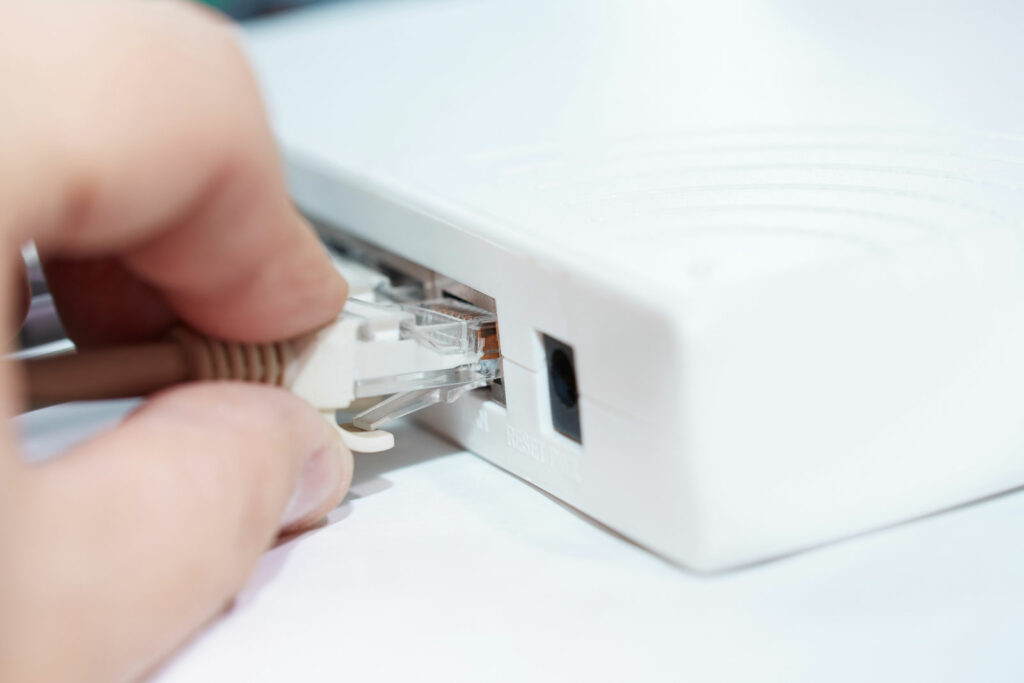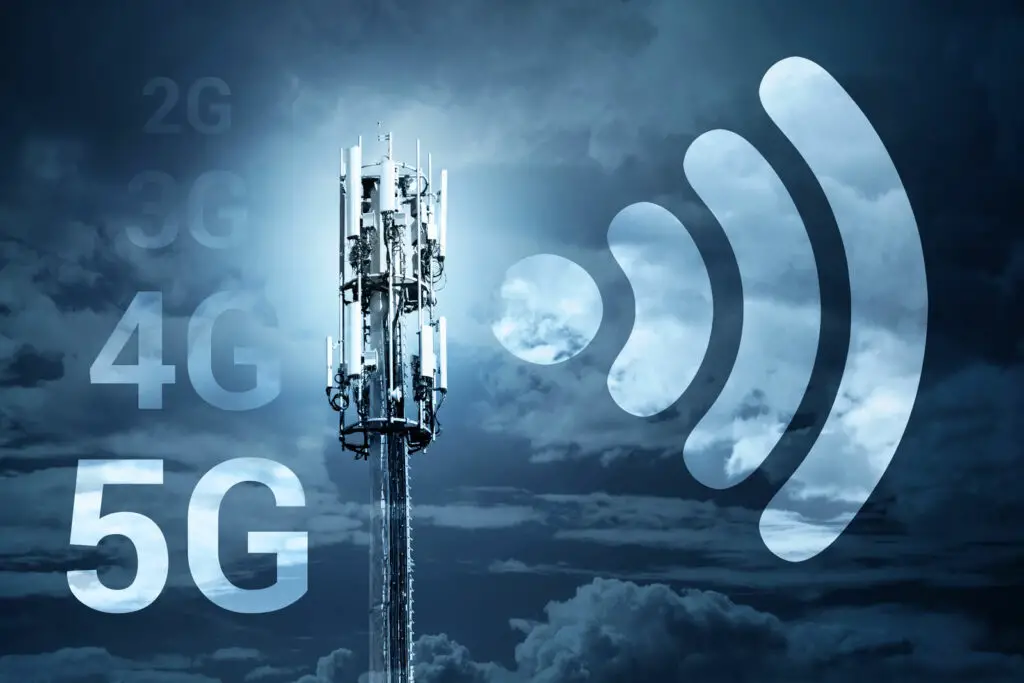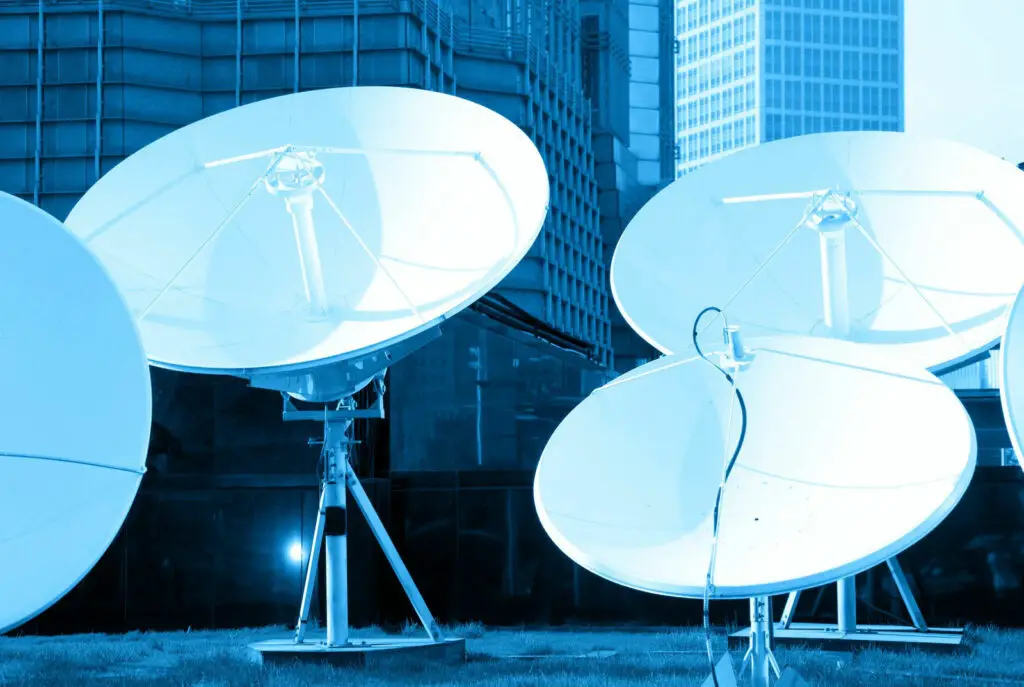Broadband internet is the way to go if you want lightning-fast access to all your online needs.
Whether streaming movies, gaming, shopping, or simply browsing, you can do it all quickly and reliably with broadband internet.
If you’re a novice to this kind of technology, don’t worry.
This guide will give you the basics on all the different types of broadband internet, their advantages and disadvantages, and tips on getting the absolute most out of your connection.
Table of Contents
- What Is Broadband Internet?
- Types of Broadband Internet
- Which Broadband Option Is Best for Me?
- What Is the Difference Between Mobile Broadband and WiFi?
- Conclusion
What Is Broadband Internet?

Fiber optic cables.
Broadband internet works via multiple technologies – cable, fiber optics, satellite, etc. – to provide super-fast internet speeds of up to 100 Mbps.
This high-speed internet access lets you browse the web effortlessly for basic or heavy activities.
Additionally, you can use broadband internet with wireless networks (and mobile broadband) for an enhanced experience.
Types of Broadband Internet
Digital Subscriber Line (DSL)
Asymmetrical Digital Subscriber Line (ADSL)
It’s a digital subscriber line (DSL) internet connection that uses telephone lines to provide high-speed internet access.
ADSL connections are typically much faster than traditional dial-up connections and can reach up to 24 megabits per second (Mbps).
Plus, ADSL uses asymmetric data rates, meaning the download speed is much higher than the upload speed.
Symmetrical Digital Subscriber Line (SDSL)
SDSL brings you the best of both worlds with its symmetrical download and upload speeds – you can send and receive data quickly and efficiently.
Again, its connection is more reliable than other broadband types, immune to outside interference, and capable of managing more data simultaneously.
Moreover, it’s safer from hacking or other potential security issues.
Cable Modem

Network modem.
Cable modems help you connect to the cable television network, typically via a coaxial cable.
Plus, you can experience ultra-fast internet speeds. Although, the speed rate depends on the specific cable modem and the number of users connected simultaneously.
Yet, many cable modems come with inbuilt wireless routers, plus you can use the devices to access digital television signals.
Fiber

Equipment for optical fiber technology.
Fiber broadband internet uses optical fibers to transmit data. Speeds can be fast – a plus.
In addition, the connections are more reliable; they’re not susceptible to interference from external sources such as electric fields or radio waves.
Wireless

The Wireless internet connection.
Wireless broadband internet uses radio waves to transmit data over long distances.
Of course, wireless broadband is ideal in rural areas – where wired connections are not available.
Still, you can use wireless broadband in urban areas – as an alternative to traditional broadband services.
You’ll enjoy several advantages to wireless broadband, including faster speeds, wider coverage, and the ability to connect multiple devices simultaneously.
However, there are some potential drawbacks as well, such as the potential for interference and security concerns.
Satellite

Satellite dish receivers.
With satellite broadband, you only need a satellite dish and modem and can connect to high-speed internet.
Typically, you can enjoy download speeds of up to 25 Mbps and increase that with additional equipment.
For your information, satellite internet is often more reliable than other types of broadband – things like weather and power outages don’t affect it.
Broadband Over Powerlines (BPL)
BPL technology uses existing power lines to transmit data signals – then, a modem receives and decodes these signals.
This type of internet access has several advantages over traditional internet access methods, including the ease of installation and the ability to provide coverage in otherwise hard-to-reach locations.
Furthermore, BPL can provide speeds up to 10 Mbps and is suitable for rural areas with spotty or non-existent internet access.
Which Broadband Option Is Best for Me?
Light User
If you’re a light internet user, you don’t need ultra-fast internet speeds – a basic DSL or cable connection might be a suitable option.
For your information, these connections boast speeds ranging from 1 Mbps to 25 Mbps, which should be enough for basic web browsing, streaming music and videos, and downloading photos and documents.
Additionally, DSL and cable connections are less expensive and are widely available.
Medium User
For medium internet users, cable internet is a good fit.
Cable internet is typically faster than DSL, making it an excellent choice for people who stream movies, play online games, or need to upload large files.
In addition, cable internet boasts more bandwidth than DSL – you can have multiple devices connected to the internet at once without experiencing any lag or slowdown.
However, cable internet is often more expensive than DSL and can be subject to slower speeds during peak times.
Heavy User
A fiber-optic broadband connection is a way to go if you’re a heavy internet user.
Of course, these connections have higher speeds; you can download large files quickly and stream HD video without buffering.
Furthermore, fiber-optic connections are less susceptible to interference from external sources. They’re also unlikely to be affected by peak usage times.
Very Heavy User
Very heavy internet users might also want to use fiber-optic broadband. Ideally, fiber-optic technology is faster and can deliver faster download speeds.
Plus, fiber-optic broadband boasts consistent speeds; you won’t experience any slowdown, even if you connect multiple devices simultaneously.
Nonetheless, fiber-optic broadband is more expensive.
What Is the Difference Between Mobile Broadband and WiFi?

Network cables.
Mobile broadband is a cellular data connection. Usually, this connection is faster but more expensive.
Meanwhile, WiFi is a wireless connection – it uses radio waves to connect to the internet.
This connection is often free or much cheaper. However, it can be unreliable as it relies on the strength of the signal from the source.
Conclusion
You can get the most out of your broadband internet connection with the right provider and plan. For more information, contact us today.
